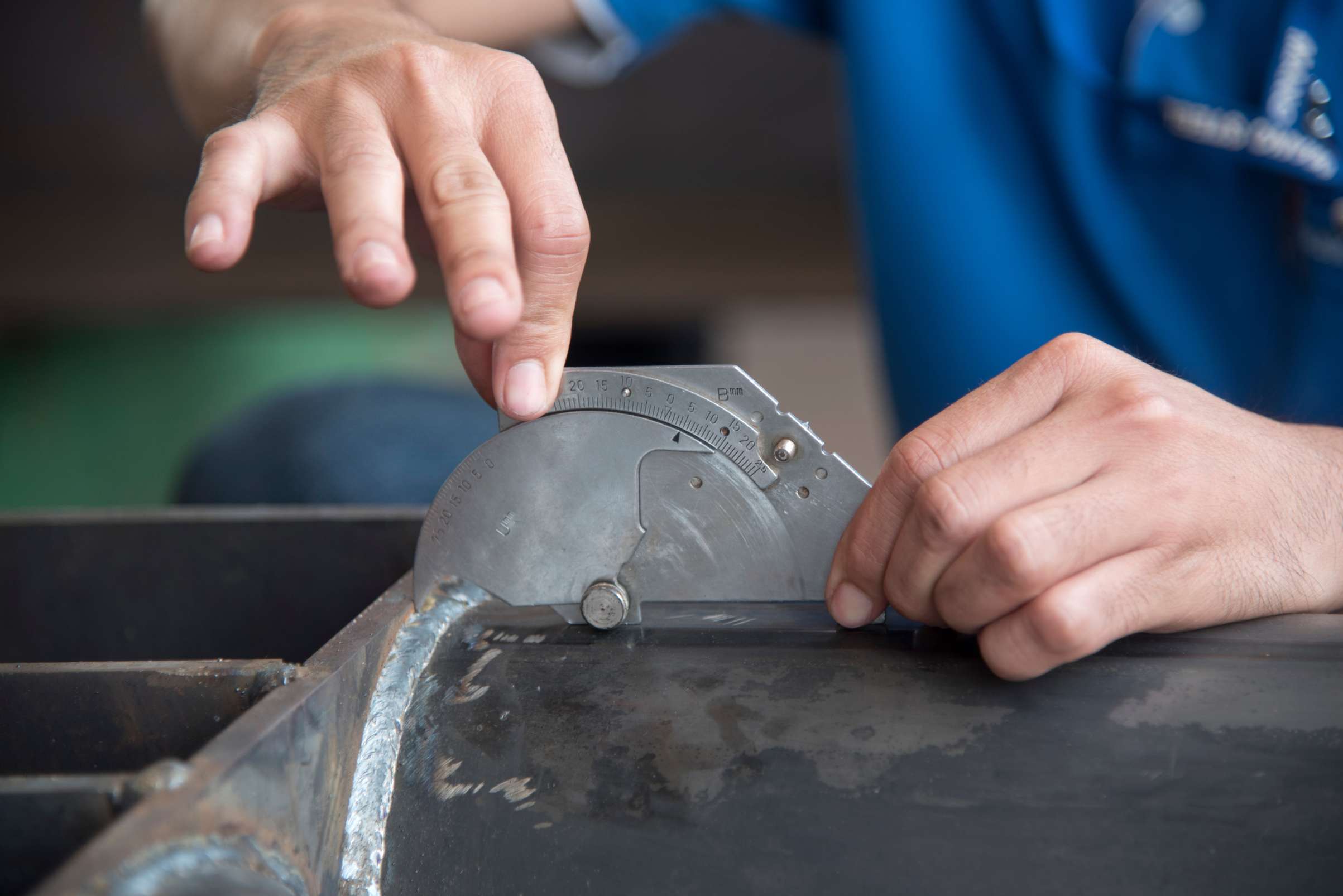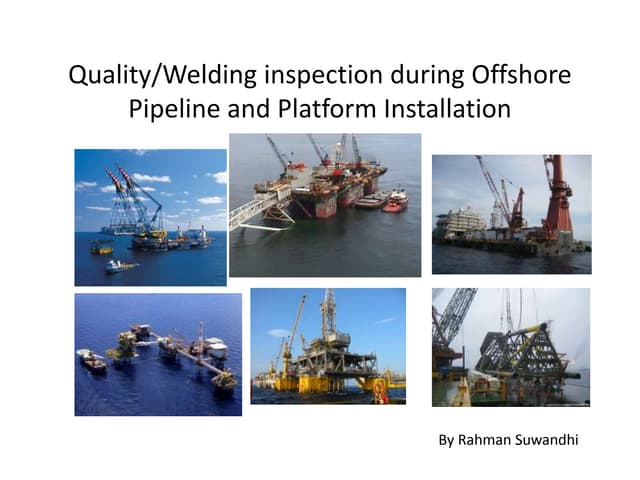Comprehensive Overview to Pipe Welding Evaluation: Making Sure Integrity and Safety And Security in Pipeline Construction and Maintenance
The stability and safety of pipelines are critical in today's infrastructure landscape, underscoring the important duty of welding evaluation in pipe building and construction and maintenance. Pipeline Welding Inspection. The complexities included in welding inspection raise pertinent concerns about sector standards and the progressing innovations that may redefine these techniques.

Significance of Welding Evaluation
Welding assessment plays a vital duty in making sure the honesty and security of pipe systems. It acts as a fundamental process that validates the top quality and dependability of bonded joints, which are typically one of the most vulnerable points in pipeline construction. With methodical evaluation, inspectors can identify potential issues such as cracks, porosity, and insufficient blend, which might compromise the structural stability of the pipeline.
The significance of welding assessment expands beyond mere conformity with market standards; it additionally safeguards public health and wellness and the environment. Thorough evaluations can enhance the long life of pipe systems, reducing the need for expensive repairs and downtime.
In addition to ensuring security and conformity, welding assessment fosters a society of high quality guarantee within companies. By prioritizing examination throughout the welding procedure, business can construct a reputation for dependability and quality, ultimately bring about increased client confidence and company chances (Pipeline Welding Inspection). Hence, the relevance of welding assessment can not be overstated in the context of pipeline construction and upkeep
Trick Welding Procedures
Different welding processes are utilized in pipe construction, each with its very own benefits and applications. Among one of the most commonly made use of approaches are Secured Metal Arc Welding (SMAW), Gas Tungsten Arc Welding (GTAW), and Gas Steel Arc Welding (GMAW) SMAW is preferred for its adaptability and capacity to carry out well in numerous environmental conditions, making it suitable for area applications.
GTAW, usually described as Tungsten Inert Gas (TIG) welding, is recognized for its capacity to generate high-grade welds with excellent control over warmth input, making it ideal for thin-walled pipelines and stainless steel products. GMAW, or Steel Inert Gas (MIG) welding, supplies high deposition rates and is efficient for massive jobs, frequently utilized in the manufacture of pipelines in controlled settings.
In Addition, Immersed Arc Welding (SAW) is used for its deep infiltration and high performance, specifically in the building of large-diameter pipes. Each of these procedures adds to the total honesty and safety and security of pipeline buildings, making it possible for welders to pick the most proper approach based upon material type, job requirements, and ecological problems. Comprehending these key welding processes is vital for efficient pipe welding inspection.
Typical Defects and Their Impact

Porosity, defined by little gas pockets trapped within the weld, deteriorates the material and can cause leaks. Cracks, which might occur due to thermal stress and anxieties or inappropriate cooling, can propagate and result in architectural failure under stress. Damaging, where the base metal is deteriorated along the weld bead, decreases the efficient cross-section of the pipeline, raising the risk of fracture.
Incomplete fusion takes place when the weld steel does not appropriately bond with the base steel, resulting in weak locations that might fail under stress. Slag inclusion, the entrapment of non-metallic product within the weld, can additionally deteriorate the joint's honesty. Identifying and resolving these issues early in the construction procedure is vital to ensuring the long-lasting reliability and security of pipe systems, consequently securing both the setting and the infrastructure.
Evaluation Devices and methods

Visual inspection is the very first line of defense, permitting inspectors to determine surface abnormalities, misalignment, or various other noticeable flaws. Ultrasonic testing uses high-frequency sound waves to spot internal imperfections, supplying exact deepness measurements and characterizing issues without harming the weld. Radiographic testing utilizes X-rays or gamma rays to generate photos of the weld, making it possible for the recognition of interior voids, splits, or inclusions.
Magnetic bit testing is especially reliable for detecting surface and near-surface stoppages in ferromagnetic products. This method involves applying an electromagnetic field and great iron fragments to the weld, exposing defects with the buildup of fragments at imperfection sites.
In addition to these strategies, specialized devices such as automated ultrasonic testing tools and digital radiography systems improve examination accuracy and effectiveness, guaranteeing a detailed assessment of pipeline welds during building and construction and maintenance.
Finest Practices for Compliance
Sticking to ideal practices for conformity in pipe welding assessment is essential for making certain the honesty and security of the infrastructure. Organizations should establish a detailed high quality administration system that straightens with market requirements such as ASME, API, and AWS. This consists of developing detailed welding treatments that define the products, certifications, and strategies required for welders.
Regular training and qualification of assessment workers are vital to keep high proficiency degrees. Inspectors need to be acquainted with different non-destructive testing (NDT) techniques, including ultrasonic screening, radiographic testing, and visual assessment, to effectively recognize prospective issues.
Documents plays a vital role in conformity; Extra resources keeping precise documents of evaluations, weld procedures, and personnel credentials assists to make certain traceability and liability. Set up audits and testimonials of welding methods must be performed to recognize areas for renovation and ensure adherence to developed protocols.

Conclusion
In conclusion, the implementation of extensive welding evaluation protocols is critical for ensuring the honesty and security of pipe construction and maintenance. By recognizing issues and employing advanced examination techniques, companies can substantially enhance the high quality of welded joints. Complying with finest practices promotes conformity with market standards, inevitably securing public wellness and preventing ecological dangers. Constant enhancement in inspection procedures will certainly add to the longevity and integrity of pipeline systems, emphasizing the crucial duty of welding inspection in the market.
The integrity and safety and security of pipes are paramount in today's framework landscape, emphasizing the critical duty of welding evaluation in pipeline construction and maintenance. Understanding these vital welding procedures is essential for efficient pipe welding inspection.
Adhering to ideal methods for compliance in pipe welding assessment is critical for making certain the honesty and safety and security of the infrastructure.In conclusion, the implementation of extensive welding inspection methods is extremely check my site important for guaranteeing the stability and security of pipe construction and upkeep. Continuous renovation in evaluation processes will certainly contribute to the longevity and integrity of pipe systems, highlighting the critical role of welding assessment in the market.